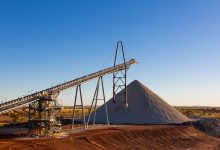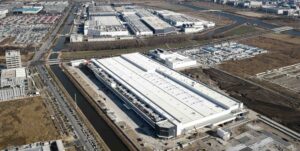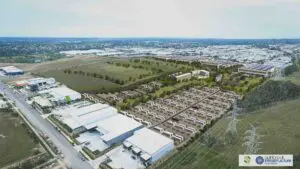This is the fourth article in a series on value-adding critical minerals opportunities in Australia. You can read the first, second and third installations here, here and here.
Australia has the potential to be a critical minerals mining and refining superpower, providing secure supply of critical inputs to the global energy transition. For example, as we note below, Australia is the world’s largest lithium mining country, but it is imperative we do more than dig and ship, we must value-add onshore using renewables.
We have identified over $10 billion of investment proposals in Australasian value-adding across a range of resources critical to the transition. This comes at a time the lithium carbonate price has hit an all time record high of $US72,000/t in October 2022, up five-fold since the start of 2021.
In our last note, part 3 or our series on critical minerals, we reviewed eight well advanced value-added refinery projects at or close to Final Investment Decision (FID), under construction or in commissioning.
In this note we review eight newer value-add refining proposals across Australia and New Zealand (NZ) to illustrate that capital flows are accelerating.
The technology opportunities we will discuss cover rare earths, hydrogen electrolysers and green ammonia, vanadium, lithium hydroxide (LHM), nickel and cobalt, as well as value-added downstream battery developments.
1. Iluka Resources, Rare Earth Mining and Refining, Eneabba, WA
In April 2022, Iluka (market capitalisation $A4.3bn) announced its FID for the development of phase 3 of Australia’s first fully integrated rare earths refinery at Eneabba in WA’s mid-west at a capital cost of $A1.2bn. The Australian government has proposed a $1.25 bn non-recourse Export Finance Australia loan of 16 years’ duration to construct and commission the refinery, and this is strongly supported by Iluka’s net cash position of $600m.
The Eneabba project is a multi-staged, value-added, rare earths refining project that captures the value of by-products in Iluka’s existing zircon operations, with a 2025 commissioning.
Rare earths are found within mineral sands monazite and xenotime, both of which are extracted as by-products from Iluka’s zircon processing. The Eneabba refinery would have a feed rate of 55 kilotonnes per annum (Ktpa), producing 17.5Ktpa of REO (Rare Earth Oxides). This will be refined to produce 4Ktpa of NdPr (neodymium and praseodymium) products.
2. Hastings Technology Metals, Rare Earth Mining and Refining, Yangibana, WA
Hastings Technology Metals’ (market capitalisation A$438m) Yangibana project in WA will develop a mine and processing (beneficiation and hydrometallurgy) plant, capable of processing 1 million tonnes per annum (Mtpa) of ore, producing up to 15Ktpa Mixed Rare Earths Carbonate (MREC).
The ore reserve is derived from multiple deposits across Bald Hill, Frasers, Yangibana West, Yangibana and Auer. All deposits are wholly owned by Hastings.
Importantly, neodymium (Nd) and praseodymium (Pr) account for ~ 85% of rare earth oxides within the ore reserve, making the project one of the highest rare earth basket values in the world.
The pre-production capital requirement was revised in February of 2022 to $658m (including contingency). The June 2022 WA Government battery report put the capex at $650m for production capacity of 3,400tpa NdPr.
Hastings was approved for a A$140m loan facility from the Northern Australia Infrastructure Fund (NAIF) in February 2022 and a $100m equity placement in October 2022, both critical components for the development of Yangibana Rare Earths Project at Onslow, WA. Employment post the 2024 completion is estimated at 250, with a construction workforce of up to 500.
3. Contact / Meridian Energy’s Green Ammonia Export Facility, Southland, NZ
We have cheated a bit by including in our Australian list of newly proposed value-add projects one very exciting world-leading project from New Zealand, the Southern Green Hydrogen (SGH) in Southland. This green ammonia facility will value-add renewable energy (hydro and wind) by electrolysis of water for export, not critical minerals.
While yet to reach FID, this 600MW green ammonia export proposal is well advanced. The proponents – Contact Energy and Meridian Energy – are well capitalised and highly motivated on decarbonisation.
The project has shortlisted Woodside and Fortescue Future Industries (FFI) as key strategic partners. And the 600MW scale is 30 times the largest operating 20MW green hydrogen facility operating in the world (outside of China, which has a 150MW green hydrogen facility operational).
SGH will also provide a critically valuable demand response management tool to turn off the facility to help manage the dry year impact of NZ’s dependence on hydro, complementing the value-add of a 90-95% average utilisation rate for the electrolyser in a normal year.
This proposal illustrates the first-of-kind, step-change in scale of green hydrogen exports (using ammonia as the carrier) moving from newly commissioned 10-20MW pilots to under construction 100MW facilities across Europe to 600MW to prove up the path to gigawatt scale proposals.
4. Fortescue’s Fortescue Future Industries (FFI), Gladstone, Queensland
ASX-listed Fortescue Metals Group (market capitalisation $A55bn) has committed to investing $US6.2bn this decade into FFI in driving towards Fortescue’s Real Zero emissions by 2030 target (scope 1&2).
The most advanced FFI major project is a $114m, 2GW electrolyser manufacturing facility at Gladstone, in a 50:50 joint venture with Plug Power US. The facility is under construction, creating over 100 construction jobs and an anticipated 50 permanent jobs.
By the time of commissioning in 2023, this will likely be the largest single manufacturing facility in the world (Germany’s thyssenkrupp nucera currently has the largest (outside of China), a 1GW facility, with plans to expand to 5GW by 2025).
The scaling up of manufacturing to drive down the production cost of electrolysers is one of the major factors driving the rapid projected cost deflation for green hydrogen, and the IEA forecasts global electrolyser manufacturing capacity will expand more than tenfold this decade to reach 65GW pa.
While this review is largely focused on value-adding critical minerals for decarbonisation, Australia also has world-leading renewable energy resources, which can’t be directly exported (until / if the Sun Cable venture is realised).
Using renewables to power critical mineral refining is one way Australia can play a globally significant role in driving decarbonisation. A second is for the replacement of imported fossil fuels like diesel and ammonia (produced from methane) with domestic powered EVs and green hydrogen, as well as the export of green ammonia.
FFI is evaluating numerous of these investment proposals, including a Front-End Engineering Design (FEED) for a 500MW electrolyser to produce up to 400,000 tpa of green ammonia at Incitec Pivot’s Gibson Island, Brisbane manufacturing facility, with FID due by June 2023.
5. Australian Vanadium, Mine and Processing Proposal, Meekatharra, WA
ASX-listed Australian Vanadium (market capitalisation $A139m)’s Bankable Feasibility Study (BFS) confirms the Australian Vanadium Project as a potentially globally significant high-grade, long life vanadium miner targeting critical minerals primarily for steel strengthening, but also energy storage (vanadium redox flow batteries).
A processing plant and concentrator near Geraldton separate from the mine site (supplied by road train) would allow access to competitively priced gas, a local workforce and access to the Geraldton Port. A separate vanadium electrolyte plant is proposed to be built in the Kwinana industrial area, south of Perth.
The proposal has a $604m capex cost, and in March 2022 received a $49m award from the Australian government’s Modern Manufacturing Initiative (MMI) grant program. FID is due 4QCY2022. This critical mineral proposal provides supply chain diversification from the current vanadium supply dominance of China and Russia.
6. Liontown Resources, LHM Refinery Proposal, Kathleen Valley, WA
ASX-listed Liontown Resources (market capitalisation $A3.4bn) has commenced construction of the Kathleen Valley 2.5Mtpa lithium mine complex with a 156Mt at 1.4% lithium oxide (Li2O) ore resource, located 680km north-east of Perth, WA.
With a fully funded in advance capex cost of A$473m, the mine will have a nameplate annual production capacity of 500ktpa spodumene concentrate and commissioning due 1HCY2024, with production the following quarter. Liontown is conducting a Pre-Feasibility Study (PFS) for the development of a ~86Ktpa lithium hydroxide (LHM) facility, with a suggested capex cost of $A1.5bn.
Should this proceed, this would represent Australia’s fourth LHM refinery.
A fifth 50Ktpa US$650m LHM refinery is being proposed by Mineral Resources in JV with Albermarle US to value-add its 2021 recommissioned Wodgina lithium mine in WA.
And ASX-listed Core Lithium (market capitalisation A$2.0bn) in October 2022 commissioned its 7.4Mt 1.3% Li2O Finniss Project near Darwin Port, Northern Territory, capable of producing 197kt of spodumene annually. Finniss is the first lithium mine outside of WA, further cementing Australia’s dominant position as the world’s largest lithium mining country, supplying half the world’s lithium (79% of hard-rock lithium carbonate equivalent (LCE)).
7. Pilbara Minerals & Calix Lithium Salts Proposal, WA
ASX-listed Pilbara Minerals (market capitalisation $15.8bn) is Australia’s largest lithium mining firm, with 100% ownership of the Pilgangoora lithium mine in WA, which produces 580Ktpa of lithium spodumene concentrate, with a $297m capex expansion to 680Ktpa reaching FID in June 2022 and due online by end-CY2023 (P680 Project).
May 2022 saw a 55:45 JV of Pilbara Minerals and ASX-listed Calix ($0.9bn) awarded a $20m grant from the Australian government under the MMI. The grant will progress a world-first small demonstration scale chemicals facility at the Pilgangoora Project with the aim of producing high value-add lithium salts for global distribution via an innovative midstream value-added refining process to dramatically reduce shipping of the ~94% waste mixed in with the 6% lithium ore. This builds on the Pilbara-Calix MoU for a scoping study executed in May 2021. This MMI grant is re-endorsed by the new federal government (albeit with grant documentation still to be executed), and FID is due 1HCY2023.
8. Sunrise Energy Metals, Nickel and Cobalt Proposal, near Parkes, NSW
ASX-listed Sunrise Energy Metals (market capitalisation $207m) is developing a nickel, scandium and cobalt fully integrated, renewable energy powered mine-to-battery-grade chemical production proposal west of Parkes in central NSW.
Sunrise is co-chaired by Robert Friedland, who was the driving force behind now Rio Tinto’s Oyu Tolgoi copper-gold-silver mine in southern Mongolia. During FY2022, a letter of conditional support was received from Export Finance Australia for up to $A400m of debt funding under the Australian government’s $2bn Critical Minerals Facility.
The total proposal has a capex estimate of $2.6bn, making this one of the largest non-coal mining value-add development proposals in NSW. The Sunrise Project would create 1,800 direct jobs during the construction phase, with an estimated 400 sustained full-time jobs from operation.
Battery manufacturing building muscle
Beyond refining resources pre-export, there is a growing debate about how significant a global player Australia can be in the battery manufacturing sector. Whilst our lack of proximity to EV manufacturing is often cited as a reason for caution for Australia, two significant counters to this are growing global supply chain security threats, and Australia’s potential to mitigate the heavy energy intensity of battery manufacturing, given our growing strengths in zero emissions, low cost firmed renewable energy at scale.
Several recent small-scale battery manufacturing facilities are testing this assertion. University of Sydney spinout Gelion has opened a pilot 2MWh pa battery manufacturing facility in Fairfield, NSW in September 2022 to produce a gel-based zinc bromide battery. And in September 2022, Energy Renaissance was reported to be planning a $28m investment to commission a lithium battery assembly plant in Newcastle, NSW to significantly expand its newly established 48MWh pa pilot.
Since 2018, Sonnen of Germany (now owned by Shell) has operated a home battery assembly factory of 30-50MWh pa of capacity in South Australia. Additionally, EcoGraf Limited is proposing a 5,000tpa Australian Battery Anode Material Facility in the Rockingham-Kwinana Strategic Industrial Area, WA. And Pure Battery Technologies is planning a $460m 50,000tpa cathode active materials and precursors (pCAM) refinery hub at Kalgoorlie, WA in partnership with Poseidon Nickel.
Climate Energy Finance sees enormous economic, trade, employment and strategic opportunities for Australia to lead on global decarbonisation efforts. Australia should be a renewable energy and value-added critical minerals superpower.
Many of these projects are energy intensive, providing a further opportunity accelerate global decarbonisation by leveraging our vast, largely untapped, low-cost renewable energy resources. This will require concerted public-private initiatives, including leveraging strategic public interest financial support like the MMI, albeit administered under the new federal government with integrity, transparency and financial support.
Tim Buckley is director of Climate Energy Finance. Matt Pollard is global EV supply chain analyst at Climate Energy Finance.
This analysis is for public interest purposes highlighting the national strategic interests and opportunities for Australia from the global energy transition. It should not be construed in any way as general nor specific financial advice. The authors own shares in BHP, Woodside and Wesfarmers, and Tim Buckley is an external advisor to Southern Green Hydrogen.










